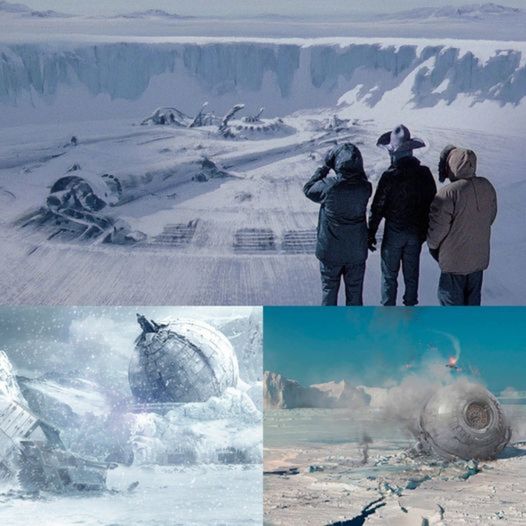Exploring Antarctica offers a glimpse into one of the most remote and inhospitable places on Earth. However, beneath its vast icy landscape lies a realm that has captivated scientists and enthusiasts alike—the potential for alien secrets hidden in the ice. As researchers continue to explore this frozen continent, intriguing discoveries raise questions about life beyond our planet and the mysteries of our own history.
Antarctica is often viewed as a desolate wilderness, characterized by its extreme weather conditions and isolation. Yet, beneath the ice, ancient ecosystems may hold remnants of a time when the continent was more temperate and perhaps even hosted life forms unknown to science. These ecosystems can provide insights into how life adapts to extreme conditions, which is vital for understanding the potential for life on other planets.
One of the most compelling aspects of Antarctica is its geological history. The ice sheets, some of which are over two miles thick, encapsulate millions of years of climatic and biological records. As scientists drill into the ice, they uncover layers that tell the story of Earth’s past, including periods when the climate was much warmer. Some researchers speculate that these ancient conditions could have been suitable for microbial life, similar to the conditions believed to exist on Mars or Europa, one of Jupiter’s moons. Such comparisons lead to exciting hypotheses about life beyond Earth and what forms it might take.
In addition to studying ice cores, researchers are employing advanced technology to explore subglacial lakes and the ocean floor beneath the ice. One of the most significant discoveries was Lake Vostok, a massive subglacial lake hidden beneath more than two miles of ice. Isolated for millions of years, the lake is believed to contain microbial life that has evolved independently of the surface world. The implications of discovering life forms in such an extreme environment could redefine our understanding of biology and the conditions necessary for life.
Furthermore, the search for extraterrestrial life is not solely about finding living organisms but also understanding the conditions that foster life. Scientists are particularly interested in extremophiles—organisms that thrive in extreme environments on Earth. The presence of extremophiles in Antarctica’s harsh conditions suggests that life could exist in similarly extreme environments elsewhere in the universe, such as the icy moons of the outer solar system or even exoplanets with hostile climates.
The exploration of Antarctica has also sparked interest in the potential for ancient alien civilizations. Some theories propose that the continent may have been a base for extraterrestrial visitors or that their artifacts could be hidden beneath the ice. While these ideas often venture into the realm of science fiction, they reflect humanity’s enduring fascination with the unknown and our desire to uncover the secrets of the universe.

As the exploration of Antarctica continues, it not only enriches our understanding of Earth’s climate and biological history but also fuels our curiosity about life beyond our planet. The combination of cutting-edge technology and rigorous scientific inquiry holds the promise of revealing the mysteries lurking beneath the ice. Each core sample and subglacial exploration brings us closer to answering the profound questions of whether we are alone in the universe and what forms life might take.

In conclusion, Antarctica is more than just a barren landscape; it is a key to understanding both our planet’s past and the possibilities of extraterrestrial life. The research conducted in this icy expanse may unlock secrets that challenge our perceptions of life and its resilience in extreme conditions. As we venture further into this alien environment, the potential discoveries could redefine not only our knowledge of Earth’s history but also our place in the cosmos. The journey to unveil the secrets of Antarctica is just beginning, and with each expedition, we inch closer to understanding the enigmatic possibilities that lie beneath the ice.
